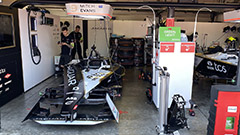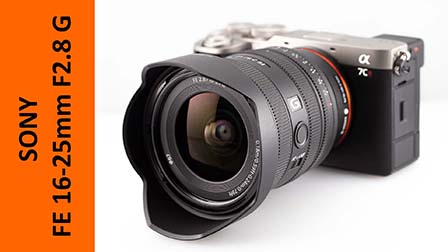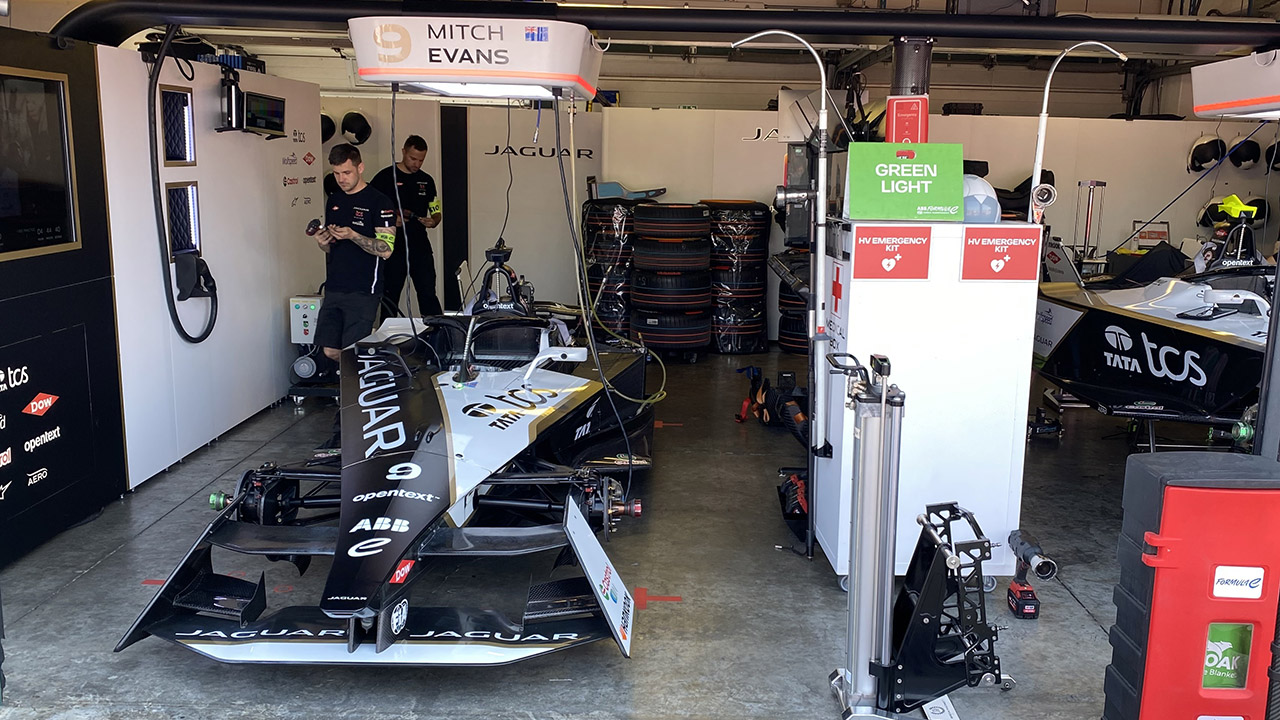|
|||||||
|
|
|
 |
|
|
Strumenti |
|
|
#61 |
|
Senior Member
Iscritto dal: Jul 2002
Città: Reggio Calabria -> London
Messaggi: 12068
|
mare di fermi?
__________________

|
|
|

|
|
|
#62 | |
|
Senior Member
Iscritto dal: Apr 2005
Città: Napoli
Messaggi: 6794
|
Questo nome non mi è nuovo...
 Lo chiama d-electrons plasma... Ora riporto l'appendice A di quel PDF in cui accenna la teoria alla base di tutto... Quote:
__________________
0 A.D. React OS La vita è troppo bella per rovinarsela per i piccoli problemi quotidiani... IL MIO PROFILO SOUNDCLOUD! Ultima modifica di bjt2 : 22-05-2008 alle 10:14. |
|
|
|

|
|
|
#63 |
|
Senior Member
Iscritto dal: Aug 2002
Messaggi: 1265
|
Hai sentito notizie sui giornali di questa scoperta storica oggi? Boh se venisse dimostrata vera a me sembra solo meno importante dello sbarco degli alieni... mi aspetterei dirette speciali di tutti i tg ma invece non c'è un cazzo. Il pericolo che si tratti solo di una mega-super bufala sta aumentando direi.
|
|
|

|
|
|
#64 | |
|
Senior Member
Iscritto dal: Apr 2005
Città: Napoli
Messaggi: 6794
|
Quote:
__________________
0 A.D. React OS La vita è troppo bella per rovinarsela per i piccoli problemi quotidiani... IL MIO PROFILO SOUNDCLOUD! |
|
|
|

|
|
|
#65 |
|
Senior Member
Iscritto dal: Aug 2002
Messaggi: 1265
|
Tu ci ridi ma è uno scenario verosimile... basta pensare che per il petrolio si scatenano le guerre: non credo che far fuori un uomo (fisicamente o meno non è dato saperlo) sia più difficile.
|
|
|

|
|
|
#66 | |
|
Senior Member
Iscritto dal: Jun 2007
Messaggi: 1618
|
Quote:
|
|
|
|

|
|
|
#67 |
|
Senior Member
Iscritto dal: Nov 2001
Città: 100 metri dal mare
Messaggi: 4842
|
__________________
TIM FTTC 200/20 LIVE SPEEDTEST
|
|
|

|
|
|
#68 |
|
Senior Member
Iscritto dal: Aug 2002
Messaggi: 1265
|
Difatti... comunque sono riuscito a recuperare l'email del responsabile dell'esperimento, se non sento niente nei prossimi giorni quasi quasi lo contatto per chiedere informazioni.
|
|
|

|
|
|
#69 | |
|
Senior Member
Iscritto dal: Jun 2007
Messaggi: 1618
|
Quote:
|
|
|
|

|
|
|
#70 |
|
Senior Member
Iscritto dal: Nov 2001
Città: 100 metri dal mare
Messaggi: 4842
|
Infatti e' proprio strana questa cosa..
__________________
TIM FTTC 200/20 LIVE SPEEDTEST
|
|
|

|
|
|
#71 | |
|
Senior Member
Iscritto dal: Aug 2002
Messaggi: 1265
|
Quote:
Non ci sto capendo più niente. |
|
|
|

|
|
|
#72 |
|
Junior Member
Iscritto dal: May 2008
Messaggi: 0
|
Ciao a tutti,
ho iniziato a documentarmi sull'argomento da quando è apparso l'articolo sul sole24ore. Aspettavo oggi con trepidazione per vedere la dimostrazione del famoso prof. Arata ma inspiegabilmente sul web non c'è alcuna traccia. Ora, ho girato nell'ordine il sito dell'università di osaka, tutti i blog possibili, ho scritto ai contatti web dell'università di cui sopra, ho letto le headlines dell'osaka daily http://www.osakadaily.com/, insomma le ho provate tutte, eppure non c'è traccia. Mistero....non credo sia una bufala perchè il prof. esiste, ha pure brevettato il protocollo e il sistema, eppure...boh...mi aspettavo scoppiasse il web su questa notizia e c'è silenzio, tranne quattro o cinque tizi (noi) che tentiamo di informarci. Ho pure scritto all'autore dell'articolo del sole24ore.... |
|
|

|
|
|
#73 |
|
Junior Member
Iscritto dal: May 2008
Messaggi: 0
|
ci siamo...............!!!!!!!!!!!!!!!!!!!!!!!!!!!!!!!!
Yoshiaki Arata, 85 anni, professore emerito giapponese (uno dei padri del nucleare avanzato nipponico e delle ricerche anche sulla fusione calda), forte nazionalista (in pubblico parla solo giapponese), decorato dall'Imperatore, ha vinto la sua battaglia ventennale da samurai.
Non ha smesso per un attimo di crederci, da quando Fleishmann e Pons annunciarono nel 1989 la sospetta fusione "in bottiglia" di molecole di deuterio (idrogeno più un neutrone di troppo) dentro un catodo di palladio. Molecole leggere, sospinte per via elettrochimica (un moderato flusso di elettroni nel fluido, dall'anodo al catodo) dentro le strutture esagonali del palladio, fino a intrappolarsi in massa, collidere, premere l'una sull'altra, fino a pressioni spontanee di milioni di atmosfere, quindi spaccare i propri nuclei, emettere calore, tramutarsi infine in Elio-4. Una fusione nucleare in piena regola, ma ottenuta senza mostruosi toroidi ad altissima energia (tipo Iter), come nelle stelle. Bensì dentro una modesta bottiglia, con un po' di acqua pesante (deuterio, lo si trova in natura) e con un particolare metallo raro. E la corrente elettrica di casa. Senza radiazioni e con la produzione finale di un gas inerte, l'elio, utile per gonfiare i palloncini. Troppo bello per essere vero. Fleishmann e Pons nel 1989 misero a rumore l'intera comunità scientifica mondiale ma non riuscirono mai a riprodurre stabilmente, se non per casi fortuiti, quel risultato straordinario, che avrebbe cambiato per sempre la storia dell'energia, del clima e forse della civiltà umana. E loro, insieme ai seguaci, furono così tacciati di truffa, di cialtronaggine, di ascientificità, fino all'emarginazione completa dalla comunità scientifica mondiale. Ma il samurai Arata tenne duro. Anche perché la sua tecnica di supercompressione del deuterio già negli anni 50 lo aveva incuriosito su certe strane anomalie incontrate con i metalli, che ora forse capiva. E decise di investire le sue ricerche su una strada diversa, per la fusione a bassa energia, da quella elettrochimica. Semplicemente spingendo, a forza di varie atmosfere, il deuterio dentro nanoparticelle di palladio, fino ad ottenere lo stesso iper-affollamento, la stessa vertiginosa crescita di pressione, la fusione e il calore. Oggi ha mostrato pubblicamente a Osaka il suo reattore in funzione, che, con soli pochi grammi di palladio ha mosso un motore a pistoni Stirling. Un reattore in parte realizzato anche con le idee di Francesco Celani e del suo gruppo di Frascati-Infn, il secondo laboratorio al mondo attivo sulla pista aperta da Arata (e il secondo gruppo di samurai). Nei prossimi giorni Arata ci proverà non con 7 ma con 60 grammi di palladio e conta di avere centinaia di watt termici di guadagno. Abbastanza da illuminare una casa, per mesi, forse con una bomboletta pressurizzata da un compressore da frigo. Ma la notizia più importante di oggi, di fronte alla platea dei maggiori giornalisti scientifici giapponesi (e alcuni venuti dagli Usa), è aver inequivocabilmente mostrato la produzione, dentro gli esagoni di palladio, di consistenti quantità di elio 4, la firma dell'avvenuta fusione nucleare e della trasmutazione del deuterio. Al punto che gli astanti hanno coniato il termine di "Arata Phenomenon". Che lui ha gentilmente accettato, con un inchino, appunto, da samurai. |
|
|

|
|
|
#74 |
|
Junior Member
Iscritto dal: May 2008
Messaggi: 0
|
|
|
|

|
|
|
#75 |
|
Senior Member
Iscritto dal: May 2000
Città: Milano
Messaggi: 13343
|
l'ho appena letto anche io!
speriamo bene! 
__________________
Canon EOS 300D; Canon EOS 40D; 17-40 f4 L; EF 50 f1.8; Sigma EX 28-70 f2.8; 70-200 f4 L; Sigma APO 100-300mm F4 EX IF HSM; TC Sigma 1.4x EX Apo DG; Canon EOS 5 con VG; Flash SpeedLite 200E; Canon T50; FD 28 f2.8; FD 50 f1.8; FD 70-210 f4 |
|
|

|
|
|
#76 | |
|
Senior Member
Iscritto dal: Nov 2001
Città: 100 metri dal mare
Messaggi: 4842
|
Ammazza
Quote:
__________________
TIM FTTC 200/20 LIVE SPEEDTEST
|
|
|
|

|
|
|
#77 |
|
Senior Member
Iscritto dal: Jan 2005
Città: padova
Messaggi: 2728
|
Ce l'hanno fatta: il primo esperimento pubblico di Yoshiki Arata di Condensed Matter Nuclear Science, meglio nota come fusione fredda è stato un successo. Poche ore fa all'Università di Osaka è stata dimostrata, di fronte a un pubblico qualificato, la realizzazione di quello che viene definito ormai "Arata Phenomena". La prova è stata compiuta facendo diffondere Deuterio gassoso su una matrice a struttura nanometrica di 7 grammi composta per 35% di palladio e per il 65% di ossido di zirconio alla pressione di 50 atmosfere, la metà della pressione di una idropulitrice per autolavaggio. Il calore, prodotto fin dall'inizio, e cioè in concomitanza dell'immissione del Deuterio, ha azionato un motore termico che si è messo in moto cominciando a girare.
Dopo circa un'ora e mezzo l'esperimento è stato volutamente fermato per effettuare le misure della presenza di Elio-4 a testimonianza dell'avvenuta fusione. Non sono state evidenziate emissioni di origine nucleare pericolose ( l'elio-4 è inerte). L'energia riscontrata è stata circa di 100.000 Joule, equivalente grosso modo a quella necessaria per riscaldare di 25 gradi un litro di acqua ( si tenga presente la modesta quantità della matrice nanometrica, 7 grammi). Quanto all'Elio, la quantità è assolutamente confrontabile e compatibile con l'energia prodotta, ed è la firma inequivocabile dell'avvenuta fusione nucleare. Al di là delle quantità misurate, si apre ora un capitolo nuovo nella comprensione dei comportamenti e delle reazioni che hanno luogo nella materia condensata, comportamenti che sembrano differire dai modelli fin qui seguiti dalla fisica nucleare classica. A partire da oggi inizia un'altra fase, altrettanto delicata, legata principalmente a due fatti: la ripetizione dell'esperimento con una quantità maggiore di Palladio-Zirconio per ottenere quantitativi maggiori di energia; l'estrazione dalla matrice dell'elio senza danneggiarla e poterla così riutilizzare. http://www.ilsole24ore.com/art/SoleO...8c&type=Libero
__________________
 La community italiana per la ricerca scientifica facile - Il blog sul mio viaggio in Giappone La community italiana per la ricerca scientifica facile - Il blog sul mio viaggio in Giappone
|
|
|

|
|
|
#78 |
|
Member
Iscritto dal: Apr 2008
Messaggi: 122
|
Quindi, si è ottenuta più energia di quella immessa???
|
|
|

|
|
|
#79 |
|
Moderatrice
Iscritto dal: Nov 2001
Città: Vatican City *DILIGO TE COTIDIE MAGIS* «Set me as a seal on your heart, as a seal on your arm: for love is strong as death and jealousy is cruel as the grave.»
Messaggi: 12347
|
Chiaramente bisogna aspettare che la notizia venga annunciata e commentata da fonti scientifiche attendibili per festeggiare, ma speriamo, sarebbe un evento di capitale importanza per la comunità scientifica.
__________________
«Il dolore guida le persone a distanze straordinarie» (W. Bishop, Fringe)
How you have fallen from heaven, O star of the morning, son of the dawn! You have been cut down to the earth, You who have weakened the nations! (Isaiah 14:12) |
|
|

|
|
|
#80 | |
|
Senior Member
Iscritto dal: Aug 2002
Messaggi: 1265
|
Quote:
|
|
|
|

|

|
| Strumenti | |
|
|
Tutti gli orari sono GMT +1. Ora sono le: 20:03.











_L.jpg)






_XXL.jpg)





